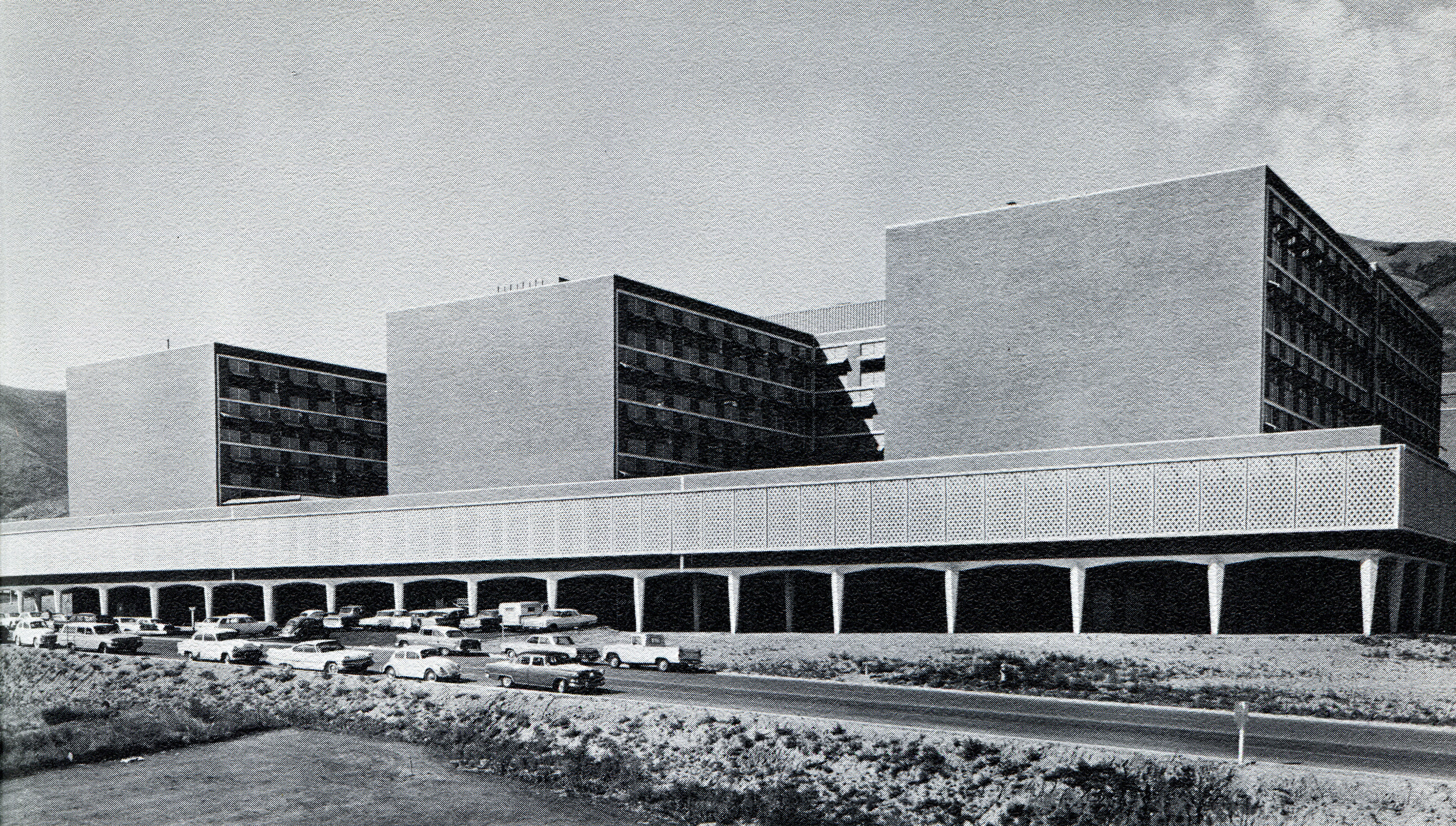⇦Previous Event

The following Friday, March 26, I woke my mother up at five in the morning. “Mommy, there’s blood in my urine again.”
We walked together to the bathroom, where the fluorescent bulbs illuminated the toilet bowl. My mother could see just the faintest tint of red-brown mixed in with the urine. “I can’t believe you’d notice that,” she said as she flushed the toilet. “Now go back to bed.”
As soon as it was eight o’clock and the office was open, my mother was on the phone with the University of Utah Family Medicine clinic where our family doctor, David Sundwall, practiced.

That afternoon we drove the ten miles to the University of Utah Medical Center. Built on the northeast foothills of the Salt Lake Valley, the hospital provided a panoramic view of the entire valley I rarely saw. The beauty of the setting, however, did not overpower the sense of gloom I felt. I knew that blood wasn’t supposed to be in my urine, and I realized that since I was missing school our trip was important. I didn’t feel sick, however; that is, until we arrived at the hospital. As we navigated through the labyrinth of hallways filled with old and not-so-old patients, some with tubes in their noses and arms, hunched over in chairs, their skin colorless, their faces sunken, I started to feel sick. They all look like Grandpa Cook in his casket, I thought, remembering the only dead body I had ever seen. Am I going to start looking like them?
While the waiting room of the pediatrics clinic was primarily filled with healthy-seeming kids at the clinic for routine visits, I obsessed about the sickly people I had passed in the hallways, my imagination exploring how my internal parts could have mutated to produce this bloody urine. It was more than an hour before we were finally in the examination room. Without fanfare, a nurse put a thermometer under my tongue and gently held my wrist as she intently watched the clock for several seconds, before letting go and scribbling something on a piece of paper, scribbling again after she retrieved the thermometer. When she wrapped my arm with the black velcro cuff of the sphygmomanometer and started to pump the bulb in her hand, I felt my arm squeezed tighter and tighter, just to the point of pain. I looked quizzically at my mother.
“She’s measuring your blood pressure,” my mother informed me. As the nurse slowly released the pressure of the cuff, I could start to feel my pulse, faintly at first, then growing stronger before finally disappearing, just before she completely released the pressure.
That was my blood I was feeling in my arm. That’s the blood that is leaking into my urine making it brown instead of yellow! That is the blood that filled my underwear the other night! Will all my blood leak away? Could bloodhounds smell me?
My mind raced away, unconstrained by facts of anatomy or physiology, my thoughts driving my heart into a beating frenzy that only increased when Dr. Sundwall finally entered the exam room.
I tried not to stare at him, or more precisely his red, well trimmed beard. Besides Santa Claus, I had never spoken to a bearded man. As alien as the beard seemed, it did have the benefit of stopping my mind’s uncontrolled thoughts about my bloody urine.
“Brian, why don’t you hop up here on the table and take your shirt off,” Dr. Sundwall said in a kindly voice that interrupted my obsession with his beard.
I got onto the table and started unbuttoning my shirt. My chest was covered with bright red splotches that merged to a continuous, red blush covering my neck and face.
While I sat on the table, Dr. Sundwall felt around my neck, under my jaw, and in my armpits before pulling out his stethoscope. “This will be cold,” he warned as he placed the metal disk on my back. I forced my body to hold still, internally absorbing the shudder the cold metal caused.
“Take a deep breath in,” he instructed. I dutifully complied, all the while staring at my knees.
“Breathe out.” The stethoscope slid around my back and my chest, every new position accompanied with a repeat of the breathing commands.
“OK, Brian, now I’d like you to lie down on your back.” He pulled out an extension of the table for my feet as I laid down. His hands started to probe my stomach, unzipping my pants to get better access to my lower abdomen.
When he was done poking and prodding, he sat down in a chair and grabbed the folder with my paperwork. Turning to my mother, he said, “I can’t find anything physically wrong with Brian. His blood pressure is a little high, but that’s probably just because he’s so excited to be here. I’m guessing he has a bladder infection, so I’m going to order some penicillin. But I’d also like him to get some x-ray studies, just to make sure that there isn’t some other cause for the blood in his urine. You won’t need to come up here for the studies; you can just get them at Cottonwood Hospital.”
He stood up to walk out, but before leaving turned to me and shook my hand. “I’m sure everything will be fine, Brian.” His voice conveyed a sense of calm, an assertion that everything would be fine.
Questions
- Who are the different people that generated data in this scenario?
- What, if any, are the medical data (and metadata) that could have been/should have been recorded from this scenario?